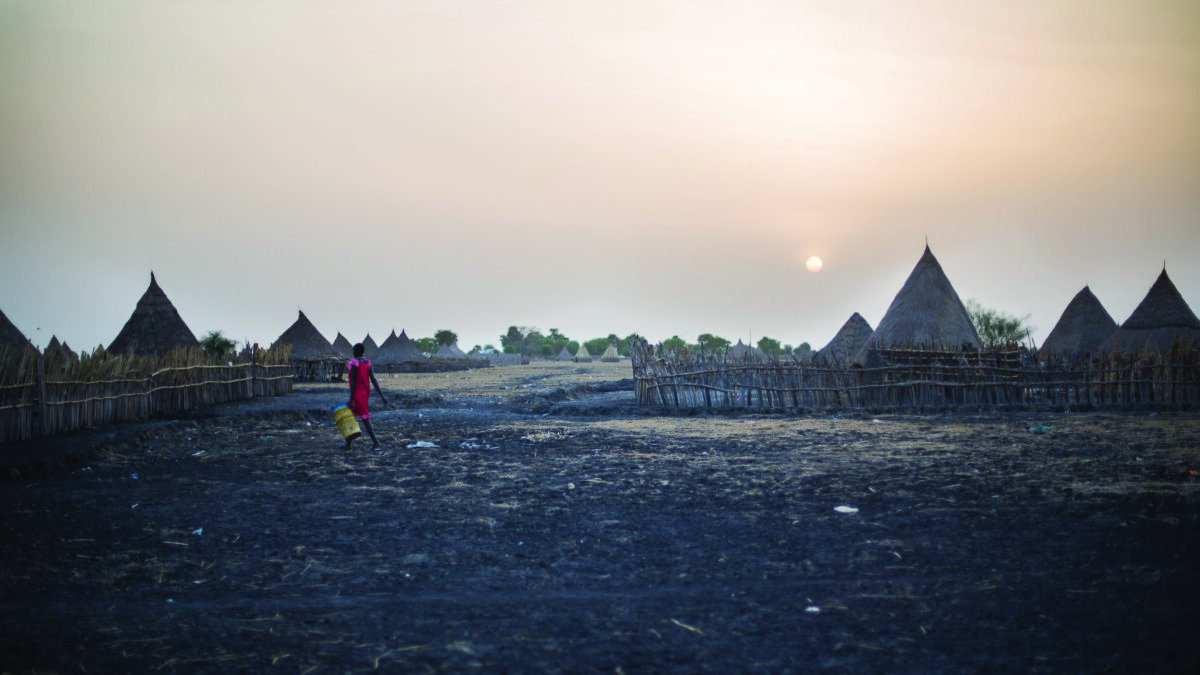
Internews’ approach to humanitarian assistance, more commonly referred to as Humanitarian Information Services (HIS), consists of a set of activities and methodologies that are closely linked to each other, and that can be combined in different ways to help Internews engage with communities. Refined and adapted over 15 years of experience on the ground, the HIS provides a framework of actions and strategies that are heavily localized, and implemented through a variety of tools and systems, but always responding to one imperative: communities themselves are the heart of every project and their engagement is key to achieving an accountable and effective humanitarian response and recovery.

Communicating with Communities (CWC)
Information is most useful when it is based on the needs and existing structures of the beneficiary community itself. CwC puts these needs and structures at the center of Internews’ work. It is a continuous process of listening, responding and adapting programs based on the needs of the community.

Feedback Mechanisms
Feedback components are an essential element of any HIS project, ensuring the voices of the community are heard by the broader humanitarian sector. Feedback cannot be detached from the fundamental right to receive information that communities need to make informed decisions. Collecting feedback and responding to communities can work only when there is trust between the communities and the organizations collecting the feedback.

Humanitarian Community Radio Stations
Radio stations can be an incredibly valuable tool to support communities in crisis and into the recovery and re-development phase. From South Sudan to Haiti, Chad, Central African Republic, Kenya, Somalia and Pakistan, in the past 30 years Internews has been supporting – and in some cases building – radio stations, to support the communities with the information they need.

Humanitarian Technology
From mobile technology to social media, from drones to artificial intelligence, Internews’ approach to technology is based on the 9 Principles for Digital Development, living guidelines that are designed to help integrate best practices into technology-enabled programs. These include guidance for every phase of the project life cycle, and they are part of an ongoing effort among development practitioners to share knowledge and support continuous learning.

Information Ecosystem Assessments
Internews’ Information Ecosystem Assessments (IEAs) are designed to identify how information flows through communities. Whether it be by word of mouth, through trusted community leaders, local media, social media and/or other “info-mediaries,” the assessments identify the most effective formats and channels to use when designing two-way communication strategies and feedback loops to meet the information needs identified in the Information Needs Assessment.

Information Needs Assessments
Information Needs Assessments (INAs) are standard assessments conducted, when possible, at the beginning of a humanitarian project to inform project design and activities. INAs aim to understand the information needs of the affected population; how they source, exchange and use information; their trust mechanisms and proxies; and their preferred methods of communication.

Listening Groups
The Internews Listening Group Methodology is a two-way communication process to both expand information access and collect feedback to support programming. Listening Groups meet regularly to listen to audio programming, review awareness campaigns, discuss issues and challenges facing their communities, and provide valuable feedback to the project and to development NGOs, humanitarian agencies, and local officials.

Local Media Rehabilitation
Response and recovery is more effective when community leaders, local authorities, and relevant NGOs have the opportunity to leverage local media to broadcast coordinated messages and encourage dialogue on pressing issues affecting local communities. When needed, Internews works to rehabilitate radio stations in the most affected areas to provide basic power and information technology support, enabling the stations to create, receive and transmit content.

Radio Distributions
Since its first Humanitarian Project in 2005, Internews has been distributing radio sets to communities across a variety of countries. In contexts where radio remains the most accessible and trusted source of information for the majority of the population, and where literacy levels are low, radio is the best and most practical way to quickly and cost-effectively spread lifesaving information to a diverse selection of beneficiaries, including the most vulnerable groups.

Rumour Tracking
In the aftermath of a disaster, from earthquakes to armed conflict, survival depends on getting reliable answers to the most important questions. When communities don’t have trustworthy sources of information available to them, rumours and misinformation spread rapidly, not only adding to the stress and anxiety of affected people but also potentially putting their lives at risk.

Training for Local Media Organizations
Local media is often the first and most trusted source of information for affected communities. Internews works side-by-side with local media and humanitarian organizations in emergencies to develop cutting edge tools and strategies for improving communication flows between them and the people affected by the crisis.